Porto-North-Portugal.com
The best independent guide to North Portugal
Porto-North-Portugal.com
The best independent guide to North Portugal
The Douro Valley; an independent tourism guide for 2025
The Douro Valley is the picturesque region surrounding the mighty Rio Douro as it meanders across northern Portugal.
The Douro region is famed for its terraced vineyards, with the grapes grown here used to produce Port wine. Within the Douro, you’ll discover stunning natural scenery, charming villages, and a region rich in history and traditions.
The Douro comprises of three sections; The Baixo Corgo (lower), the Alto Corgo (upper) and the Douro Superior (to the east of Portugal). The Alto Corgo is the most scenic, with terraced vineyards covering every hill and pretty towns such as Pinhão, Tua and Peso da Régua lining the riverside.
Further eastwards is the Douro Superior, an arid and sun-scorched region, too hot for grape growing but the setting for some of Europe’s finest prehistoric cave drawings near the town of Vila Nova de Foz Côa.
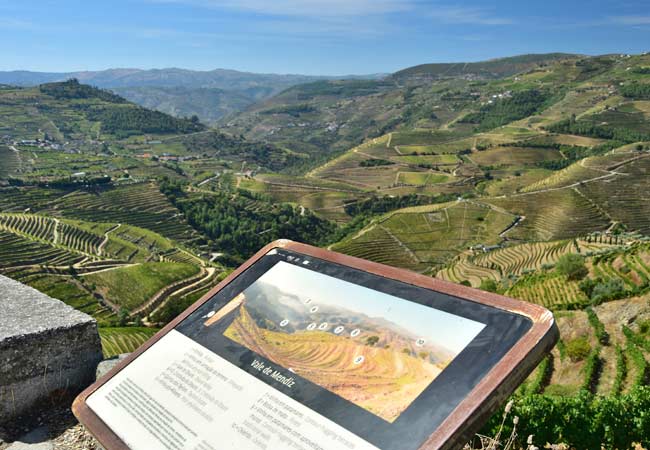
The view from the Miradouro Vale de Mendiz in the Alto Corgo
Following the course of the river is the Linha do Douro, a railway that historically connected the grape cultivating centres, and today is one of Europe’s most scenic railways. As equally stunning is the N222 road that follows the Douro River from Porto to Pinhão, before cutting inland to Vila Nova de Foz Côa.
The spectacular scenery and slow-flowing waters make the Douro River a fantastic setting for boat cruises. These range from half-day tours that depart from Porto, through to week-long cruises on luxurious ships.
The Douro covers a vast and varied region, and conceals many hidden gems. There is the delightful town of Lamego, the deserted hiking routes around lake Tua, or the magnificent viewpoints, such as the Miradouro de São Leonardo de Galafura.
This guide will provide an introduction to the Douro Valley and help you get the most from this fantastic region.
Related articles: The N222 driving tour of the Douro - The Linha do Douro railway
Highlights of the Douro Region
Pinhão - The prettiest town of Douro Valley, sitting on the banks of the river and surrounded by terraced vineyards. Pinhão is the best location for a short (1-2 hour) boat cruise.
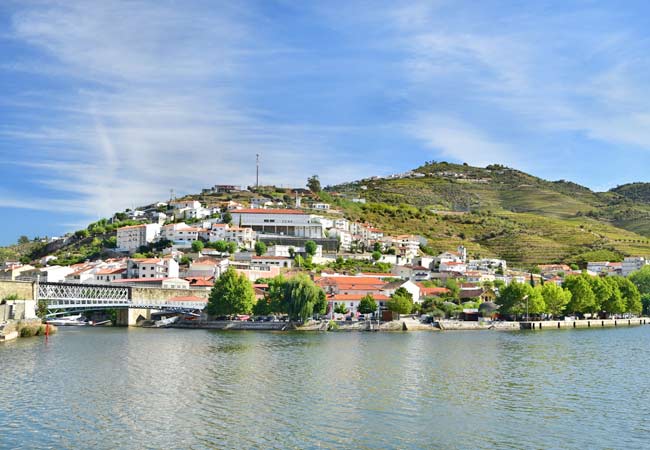
Linha do Douro - The scenic railway that connects Porto to Pocinho and follows the river between Mosteirô and Pocinho.
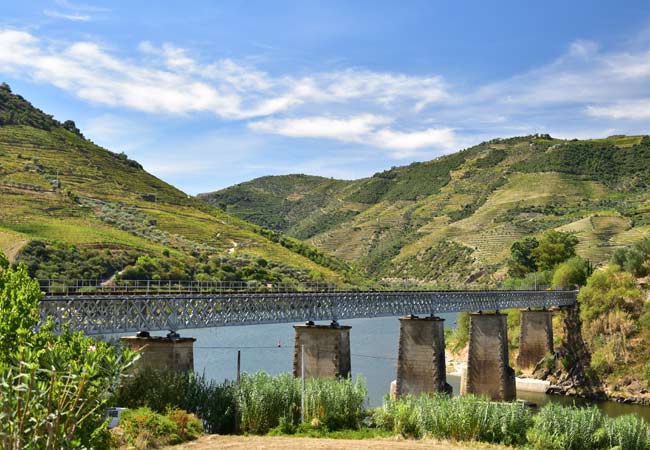
Miradouro de São Leonardo de Galafura - A spectacular viewpoint overlooking the entire Alto Corgo region.
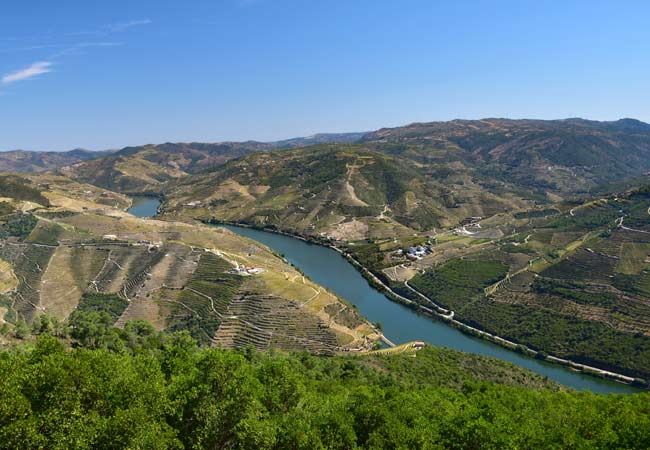
Lake Tua - Pristine natural scenery and deserted hiking routes around one of the quietest areas of the Douro region.
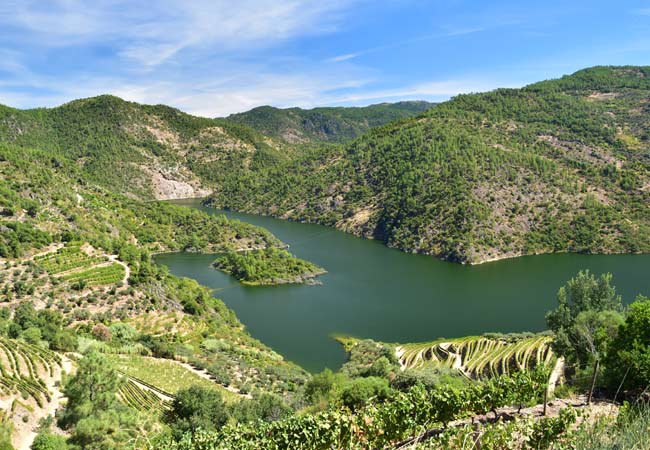
Insight: The Douro is the world’s only major grape-growing region where the grapes are harvested by hand. The steep hills mean the terraced vineyards are inaccessible to modern machinery, and can only be picked by hand.
Sights of the Douro region
The interactive map below displays the main sights of the Douro region. The towns of the region are shown in green, while the yellow pins display the main tourist attractions. The Yellow line marks the route of the N222 road, and the Linha do Douro railway is shown by the green line. (Note: zoom out to see all of the points)
Towns on the Douro: 1) Peso da Régua 2) Pinhão 3) Vale de Mendiz 4) Tua 5) Pocinho 6) Vila Nova de Foz Côa 7) Barca d'Alva Pier 8) Lamego
Sights of the Douro: 9) Tua Lake 10) Museu do Douro 11) Parque Arqueológico do Vale do Côa 12) Mosteiro de São João de Tarouca 13) Ucanha (historic village) 14) Casa de Mateus 15) Castelo Rodrigo
The 5 best viewpoints 16) São Leonardo de Galafura 17) Douro Vale de Mendiz 18) São Salvador 19) Mundo Rota
Dams: 20) Régua 21) Tua 22) Valeira 23) Pocinho
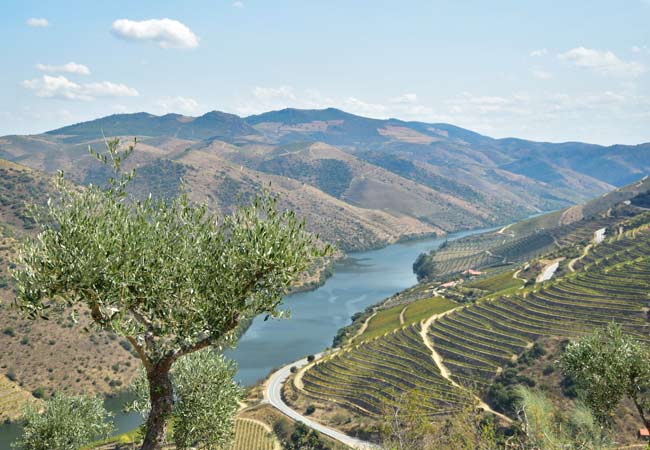
The Douro Superior at Vale do Côa River Valley
Tours of the Douro Valley
An organised tour led by an experienced guide is often the best way to get the most from the Douro region. There are many excellent tours that combine wine tasting, a boat cruise and sightseeing in a single day. Some of the best tours offered by GetYourGuide include:
Exploring the Douro
The Alto is the best region of the Douro, and is easily accessible from Porto. The three main ways to visit are independently by car or train, or via an organised boat trip - each method has its own benefits and limitations.
The Douro by Car
A car offers the most flexibility, with the opportunity to visit the more remote regions and set your own pace. The Douro is ideal for driving with decent roads that are deserted once you turn off the busy N222. Road driving is slow within the region as roads meander along river valleys or switch-backs up steep hills.
A scenic 1-day driving route follows the N222 to Pinhão, then heads into Tua via Favaios, and re-joins the N222 by crossing the Valeira Dam. A full guide to this route can be read here.
There are very good roads connecting Porto to Peso da Régua, the main city of the Alto region. From Porto, take the A4 toll expressway and then head south on the A24 to Peso da Régua. This journey takes 1h15min, and means the best sections of the Douro can be visited as a day trip from Porto.
For a more relaxing approach, consider spend a night in the pretty town of Lamego, which is also served by the A24.
Insight: With a longer trip, include Vila Nova de Foz Côa and the fortified towns of the Beira region.
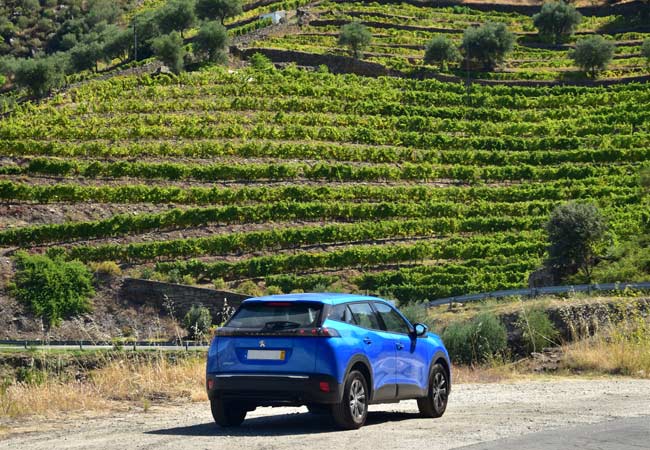
The Douro by Train
The Linha do Douro is an important train route with 11 daily departures to Peso da Régua and five daily services continuing up to Pocinho. The first section of the railway is inland, but from Pala (65min into the journey), the railway follows the northern banks of the Douro.
Insight: For the best views, sit on the right side of the carriage when departing from Porto. The railway switches to the southern side of the river at Ferradosa, but by then, the train will be almost empty.
The train provides many different options for your day trip; four of the best are: 1) head to Pinhão 2) head to head to Pocinho 3) Head to Peso da Régua 4) Head to Tua
Pocinho - You could ride the entire length of the Linha do Douro to Pocinho. This means you do see the entire route, but for a day trip, you will spend almost 5 hours on the train. Also, Pocinho is only a minor town, and does not have that much to see.
Pinhão - A much better option is to ride the train to Pinhão (2hours 20min). In Pinhão, you could explore the pretty town, join a short boat cruise that depart from the harbour and visit the Miradouro de Casal de Loivos viewpoint.
Peso da Régua - There are many more daily departures to Régua, and the journey is shorter (1h40min). Peso da Régua has a pretty riverfront, and this is the setting for the informative Museu do Douro, while from the harbour are many different options for a boat tour. Another option is to catch the bus from Régua to Lamego (20min)
Tua - Tua is an alternative to Pinhão, and while in the village, you could walk to the dam. Tua is a little bit disappointing when compared to Pinhão; the sprawling village has no real centre, and there are no boat tours.
In Porto, all of these train services depart from the Campanhã train station, and a few leave from São Bento station - which is closer to the main tourist area. The train services are operated by Comboios de Portugal (CP), and the latest timetable can be seen on their website:
www.cp.pt
Insight: During the summer, a heritage train - a classical steam train and elegant carriages - run along the Linha do Douro, details of this can be seen on the CP website: www.cp.pt
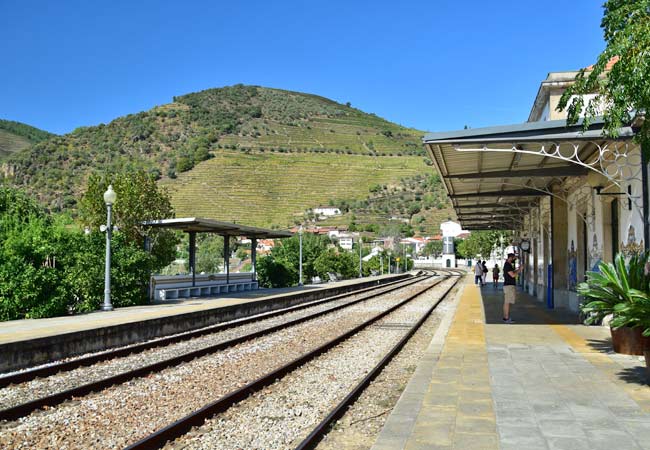
Pinhão train station
The Douro by Boat
The Douro provides some of the finest river scenery in western Europe, and a cruise along the river can be a magical experience.
Being such a major tourist activity, there is a vast section of boat tours and options. These boat trips range from half-day tours from Porto to Peso da Régua (with a return on a bus) through to luxurious weeklong voyages on boats that resemble floating palaces.
The Alto Corgo is by far the most scenic stretch of the river (Peso da Régua through to Tua), and is lined with terraced vineyards and steep hills. The Baixo Corgo is also pretty, surrounded by forests and countryside, which becomes more hilly further westwards. Heading upstream (eastwards) is always the best way to view the Douro, as the scenery continually gets better - upstream tours from Porto often cost a little bit more but are worth it.
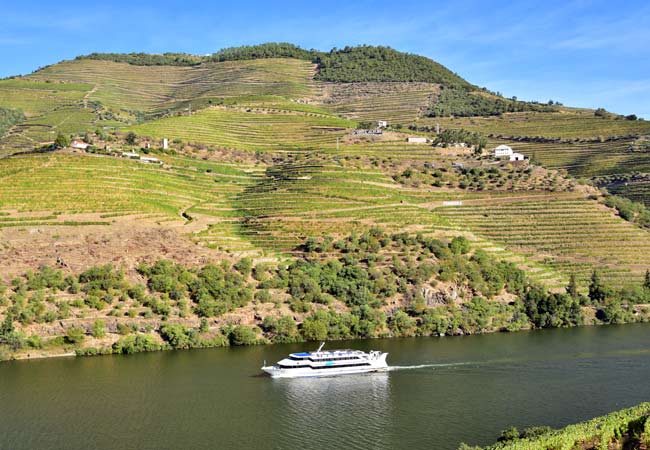
The Douro close to the Barragem da Régua
The majority of tourists join a boat tour that departs from Porto and heads to Peso da Régua or Pinhão, and includes breakfast and lunch, and a visit to a wine-producing Quinta, with a return to Porto via a bus or the train. The main consideration with a boat tour is how long you actually want to sit aboard the boat. The scenery is stunning but sitting in the same seat for over 8 hours may become a bit tiresome, especially for children.
As with everything in life, you get what you pay for; a cruise may seem great value, but there are some huge boats accommodating over 600 passengers. When booking a Douro boat tour, always confirm the size of the boat and the quality of the meals.
Insight: If you are visiting the Douro Valley independently, we would suggest taking the train to Peso da Régua and catching a boat tour from Peso da Régua to Pinhão and return via the train or the boat. A 1-2hour boat cruise is enough for most people, and often smaller boats are used for the shorter boat rides.
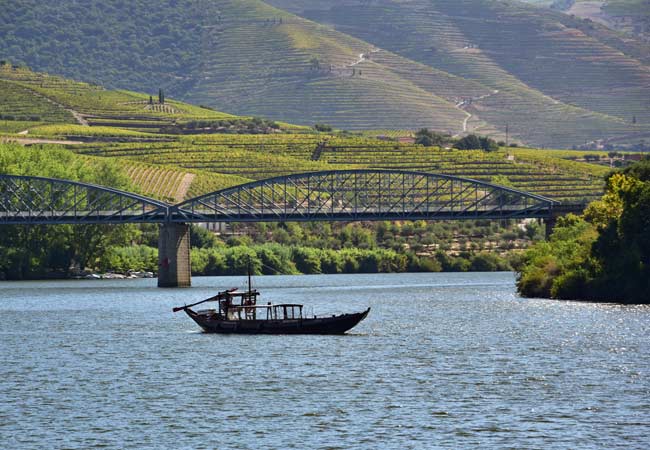
A traditional Rabelo boat near Pinhão
Wine tourism of the Douro, the best Quintas
The Douro Valley is the world's oldest officially recognised wine region and the birthplace of Port wine. The terraced vineyards that cling to the steep hillsides represent centuries of cultivation while the traditional Quintas preserve historic methods of wine production.
The following map shows the locations of the finest vineyards and wineries in the region, each offering unique wine-tasting experiences and cellar tours. While some Quintas accept walk-in visitors, most require advance booking for their tours and tastings, especially during the busy harvest season between September and October.
Legend: 1) Quinta do Noval 2) Quinta do Bomfim 3) Quinta das Carvalhas 4) Quinta do Seixo 5) Quinta da Roêda 6) Quinta do Crasto 7) Quinta da Pacheca 8) Quinta de La Rosa 9) Quinta do Panascal 10) Quinta de São Luiz 11) Quinta Vale Dona Maria 12) Quinta do Tedo 13) Quinta Nova de Nossa Senhora 14) Quinta do Portal 15) Quinta de Nápoles 16) Vieira de Sousa 17) Quinta dos Avidagos 18) Quinta do Vallado
Quinta do Noval
Known worldwide for its premium ports, especially the iconic vintage Noval Nacional, produced from ungrafted pre-phylloxera vines. The estate dates back to 1715 and its terraced vineyards are among the most photographed in the Douro. Tours and tastings by appointment only. www.quintadonoval.com
Quinta do Bomfim (Symington Family)
Famous for its central location in the Douro Valley and premium ports, particularly Dow's. The estate features a museum showcasing traditional winemaking equipment and has been owned by the Symington family since 1896. www.symington.com
Quinta das Carvalhas (Real Companhia Velha)
One of the Douro's largest estates, covering 600 hectares. Known for its panoramic vineyard walks and distinctive white house positioned at its highest point, offering 360-degree views of the valley. realcompanhiavelha.pt
Quinta do Seixo (Sandeman)
Modern winemaking facilities blend with traditional architecture at this 100-hectare estate. Features an advanced visitor center and offers detailed insights into Sandeman's port production methods. www.sandeman.com
Quinta da Roêda (Croft/Taylor's)
A historic estate known as the "jewel of the Douro," featuring some of the region's oldest vine terraces. The quinta produces exceptional vintage ports and offers traditional grape treading during harvest. croftport.com
Quinta do Crasto
Spectacularly positioned on a steep slope above the Douro, this estate dates to 1615. Recognized for its quality wines, especially reds, and preservation of old vines. www.quintadocrasto.pt
Map 3 - Accommodation in the Douro Valley
When choosing where to stay in the Douro Valley, visitors face a delightful dilemma that perfectly encapsulates the region's unique character. Your choice essentially falls into two distinct experiences, each offering its own charm and advantages.
The first option is to stay within one of the historic quintas. These converted farmhouses offer an authentic glimpse into the region's wine-making tradition, often featuring elegant rooms within centuries-old buildings surrounded by terraced vineyards. While these properties provide unparalleled tranquillity, they are typically remote and require a car for access to restaurants and amenities.
The second option is to be based in one of the region's historic towns. Each major town has its own distinct personality:
• Lamego stands out as the most appealing base for many visitors. Located just south of the Douro River and connected via the efficient A24 highway to Peso da Régua, this historic town combines architectural splendour with practical amenities. Its selection of restaurants, shops, and cultural attractions makes it an ideal hub for exploring the region.
• Peso da Régua, while not as historically picturesque as Lamego, serves as a crucial transportation hub and offers excellent riverside dining options. Its central location makes it particularly convenient for wine tourism. The largest selection of boat tours departs from here.
• Pinhão is the most scenic town, positioned on a dramatic bend of the Douro River. While smaller than its Lamego and Peso da Régua, what it lacks in size it makes up for in charm.
Our interactive map, powered by Booking.com, helps you explore current options and locations throughout the Douro Valley. After the map are details of some of the finest quintas.
Quinta do Vallado
This historic wine estate offers both traditional and contemporary accommodation wings. Guest rooms overlook the terraced vineyards and River Corgo. The hotel features a panoramic pool, wine bar, and offers guided tastings in their impressive barrel room. Further information
Quinta Nova Winery House - Relais & Châteaux
This luxury country house hotel sits above the Douro River, offering spectacular panoramic views. Guest rooms blend traditional charm with modern comforts. The property features an infinity pool, wine library, historic chapel, and gourmet restaurant serving regional cuisine. Further information
Casa do Rio
A modern boutique hotel belonging to Quinta do Vallado, featuring just six exclusive suites. The striking contemporary building sits elevated above the vines. Each suite has a private terrace, and guests can enjoy the infinity pool overlooking the Douro River. Further information
Six Senses Douro Valley
Set in a renovated 19th-century manor house, this luxury spa resort offers elegant rooms and suites with valley views. Facilities include an impressive wine library, organic garden, multiple restaurants, extensive spa, and both indoor and outdoor pools. Further information
Quinta da Côrte
A boutique hotel designed by renowned architect Pierre Yovanovitch, featuring distinctive oval windows and local schist stone. Guest rooms combine traditional materials with contemporary design. The property includes a wine shop and tasting room. Further information
Quinta da Pacheca
Known for its unique accommodation options including wine barrel rooms overlooking the vineyards. The estate also offers traditional hotel rooms in the main house. Features include a wine shop, restaurant, and cooking school focusing on regional cuisine. Further information
Ventozelo Hotel & Quinta
A collection of converted farm buildings now housing comfortable guest rooms. The hotel features an infinity pool with vineyard views. Includes a museum of farming life, walking trails through the estate, and a restaurant serving local specialities. Further information
The Vintage House
Located in Pinhão, this riverside hotel occupies a converted 18th-century wine lodge. Rooms feature private balconies overlooking the Douro River. Amenities include an outdoor pool, wine shop and elegant restaurant with riverside terrace. Further information
Lamego
If you have a car, then Lamego should be your base for exploring the Alto Douro region. The town is delightful, with a pretty historic centre and a grand avenue that leads to the Nossa Senhora dos Remedios Church and its impressive baroque stairway. Found within the town is a decent selection of restaurants, bars and cafes, and offers a pleasant authentic Portuguese atmosphere. Lamego is also fantastic for a day trip.
Related articles: Lamego guide
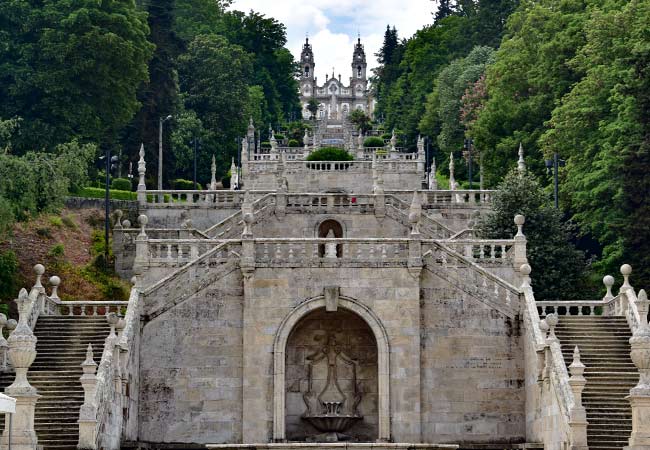
Its 686 steps up to the Nossa Senhora dos Remedios
When to visit the Douro
The best time to visit the Douro region is late May and early June, along the harvest season (September). The weather is good at these times of year but is without the crowds (on the boats or roads) as in August.
During the winter, a lot of rain falls over the Baixo and Alto regions, and the significant rain continues until April, which is surprisingly wet. If you plan to visit during the low season (October to April), make sure you have flexible plans which can alter around the weather. Most boat cruises shut in the winter.
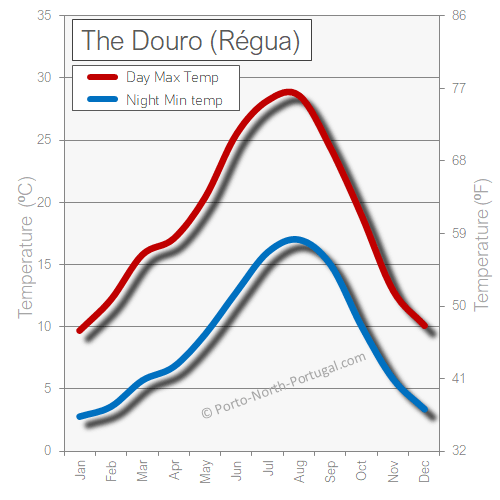
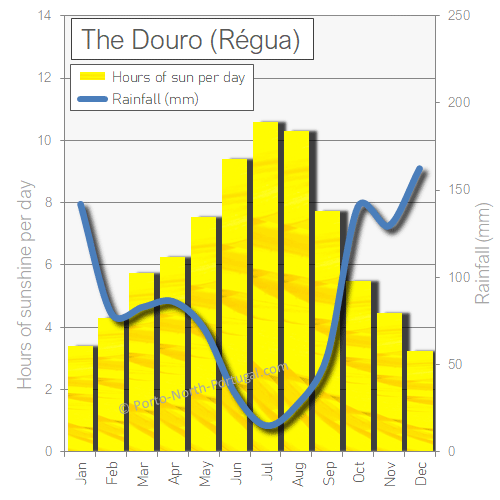
Hidden and lesser-known sights of the Douro region
The ruins of the Mosteiro de São João de Tarouca, which sits in a hidden valley and was the most important monastery in Portugal during the medieval era.
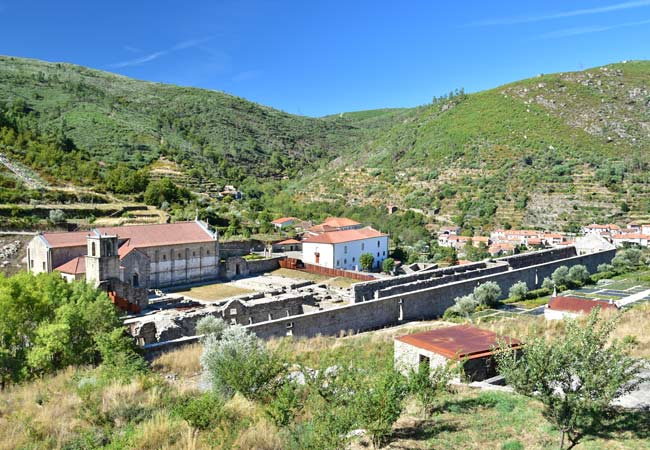
The tiny village of Ucanha, with its charming toll bridge and defensive tower, and river swimming pools (the Praia Fluvial de Ucanha).
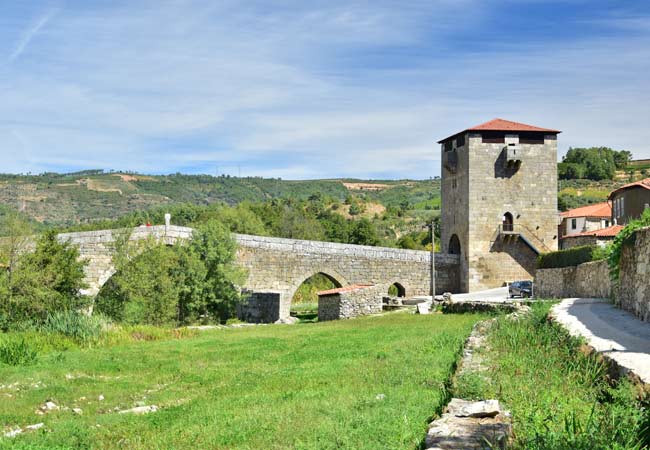
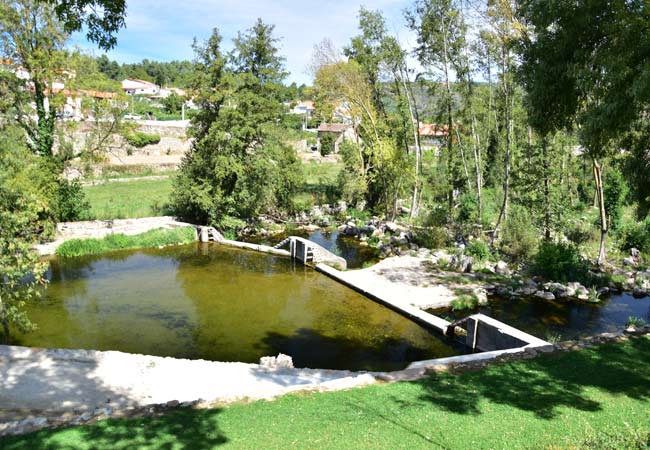
The Praia Fluvial de Ucanha
The Côa River Valley rock art, which dates from 22,000 to 10,000bc. The valley is a protected site, and can only be visited via a pre-booked tour from the informative Côa Museum www.arte-coa.pt/
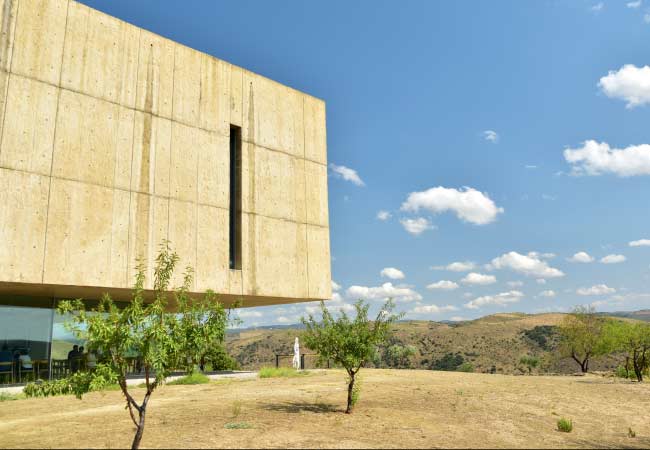
Castelo Rodrigo a delightful hilltop village with castle ruins that overlooks the Spanish border.
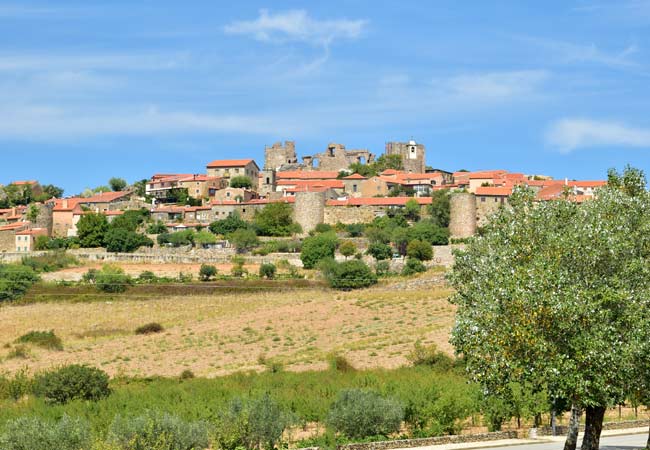
If you've found our content valuable, we'd welcome your support.
The digital publishing landscape has evolved significantly. As a small independent publisher, we face growing challenges. Search engines increasingly favour paid content over organic results, while AI-generated content often reproduces original work without attribution.
To support our work, please consider bookmarking this page (press Ctrl + D) for quick access. If you find an article helpful, we'd be grateful if you'd share it with friends on social media.
For specific questions, please see our Reddit community at r/LisbonPortugalTravel.
Should you notice any outdated or incorrect information, please contact us at [email protected]
Thank you for helping us continue to provide valuable content in an increasingly challenging digital environment.



















